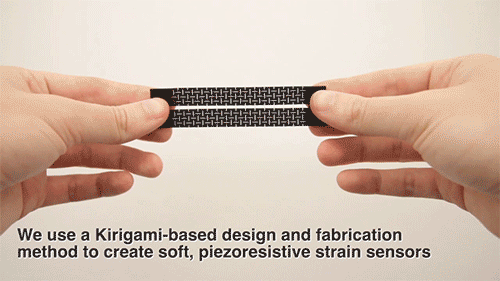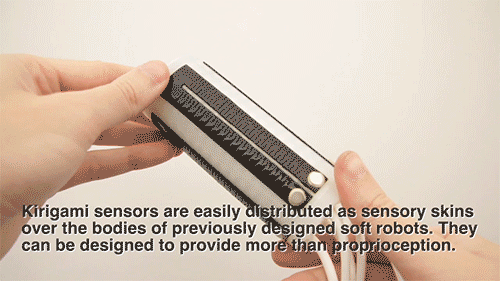MIT showcases soft robotic sensors made from flexible, off-the-shelf materials
A team at MIT's CSAIL demonstrated a new kind of "skin" designed to bring a sense of touch and place to soft robotic arms. The findings, which debuted in the IEEE Robotics and Automation Letters this week, find the researchers covering a soft robotic "trunk" in flexible sensors made from material used for "electromagnetic interference shielding."
The usually rigid material was reconfigured into a "kirigami" configuration, laser cut and reassembled into chain-linked rows so it can be stretched and flexed to adhere to the shape of the robot and move with it. The components are essentially off-the-shelf for most labs and could serve as a low-cost way to add a sense of touch to the growing field of soft robots.
"Think of your own body: You can close your eyes and reconstruct the world based on feedback from your skin," CSAIL's Daniela Rus said in a release announcing the research. "We want to design those same capabilities for soft robots."

Researchers then built a neural network to process the results and distinguish the signal from the noise that the sensors were collecting, reinforced by a more traditional motion capture system. Moving forward, CSAIL will be exploring new configurations and working to improve the neural networks.